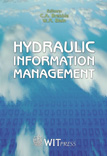Determination Of Nitrogen Removal And Presence Of Heavy Metals In Liquid Effluent System
Price
Free (open access)
Transaction
Volume
52
Pages
7
Published
2002
Size
278 kb
Paper DOI
10.2495/HY020261
Copyright
WIT Press
Author(s)
I. G. Bantcheva
Abstract
The removal of nitrogen from wastewater is accomplished by combining the processes of nitrification and denitrifications. Biological nitrogen removal process has become subject of growing interest because of the restricted requirements for nitrogen reduction at wastewater treatment plants. The study of the liquid effluent system of plant for production of nitrogenous fertilizers was carried out. The objectives of the study were as follows: ? To determine the removal of Nitrogen in the Liquid Effluent System ? To determine the presence of heavy metals The analysis on the liquid effluent and Alum sludge samples from wastewater treatment plant for production of nitrogenous fertilizers were carried out. Process liquid effluent contains most of the pollutants: ammonia, ammonium nitrate, and nitric acid. The concentrations of free ammonia-nitrogen, ammonium-nitrogen and nitrate-nitrogen were determined. Analysis on the Alum sludge was earned out to determine the presence of toxic compounds. Special attention was paid on presence of heavy metals. The following heavy metals were detected in the sludge samples: zinc, lead, nickel, iron, and chromium. The results showed that the removal of the nitrogen from the liquid effluent system were not very effective. The average percent of the removal of the nitrogen was about 40°A during the period of study. It was determined that the influent to the denitrifying unit lacks a sufficient energy source for denitrification to occur at acceptable rates. The other factor that contributes to the low rates of nitrogen removal is that the Alum sludge is mixed with the rest of the factory’s wastewater, The heavy metals detected in the Alum sludge are also potentially toxic to the aquatic life.
Keywords





